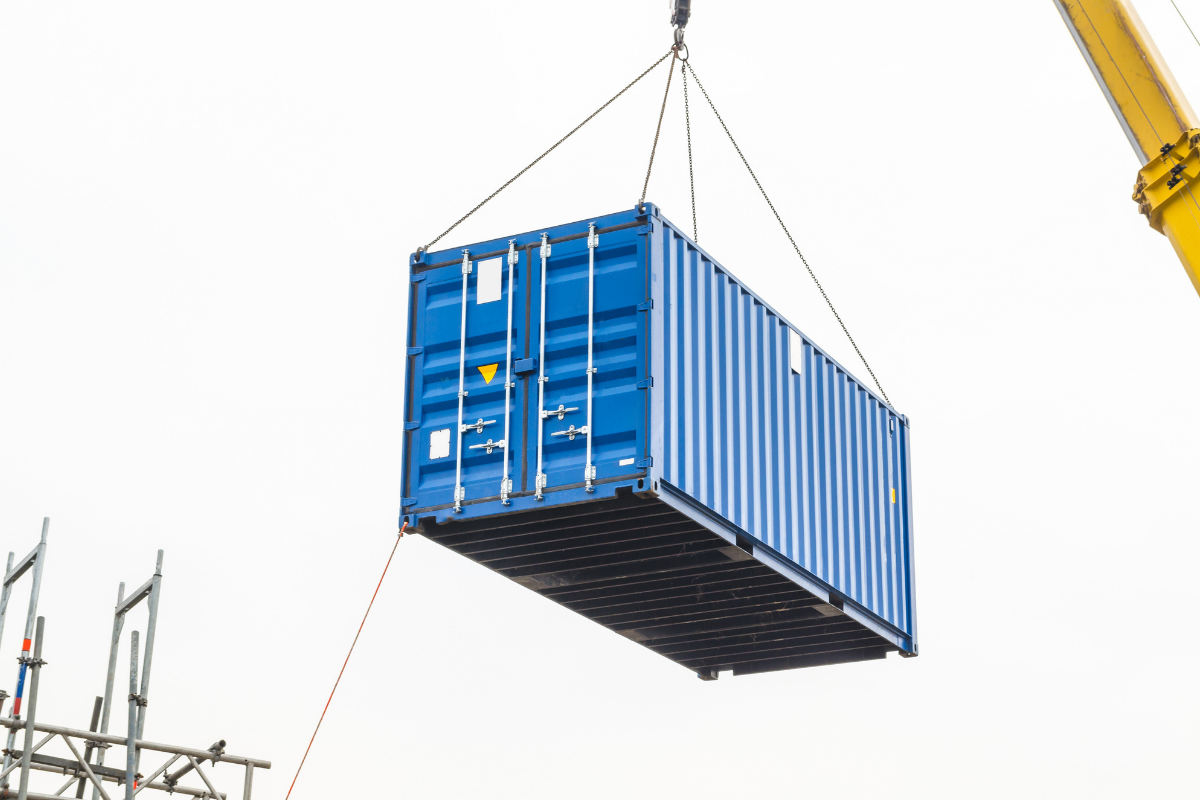The term “drayage” might sound almost quaint, evoking horse‑drawn carts hauling goods across town. Yet in today’s global supply chain, container drayage is a critical node connecting ocean ports, rail yards, and inland distribution. For companies like TOP Worldwide, understanding the container drayage market means gaining better control of cost, risk and service reliability. This blog examines the fundamentals of container drayage, explores current market dynamics and trends, and offers strategies for leveraging drayage as a competitive advantage.
What is Container Drayage and Why It Matters
Container drayage refers to the short-haul transport of containers (usually by truck) from a port, terminal, or rail yard to a warehouse or intermodal facility. While the miles may be short, typically 15–50 miles, this leg is crucial for the smooth flow of goods.
Effective drayage ensures containers move quickly from vessel or rail to their next destination. Delays can result in demurrage, detention fees, inventory issues, or lost sales. Port congestion, equipment availability, and appointment scheduling add complexity, making drayage a frequent bottleneck.
Strong drayage operations reduce costs, improve lead times, and increase overall supply chain reliability. For shippers and logistics providers, this leg is a strategic touchpoint, not just a tactical necessity.
Market Size and Growth
Recent industry reports (Emergen Research, Mordor Intelligence, OpenPR) show that the global container drayage market was valued at roughly USD 52 billion in 2024 and is projected to reach USD 96 billion by 2033, representing an annual growth rate of about 7%. Growth is driven by expanding containerized trade, e-commerce, and increased investments in port infrastructure.
The U.S. and European markets are particularly significant. Europe alone is expected to grow from around USD 7.7 billion in 2025 to over USD 10 billion by 2030, while U.S. ports continue to face high-volume surges that strain drayage capacity.
Even though the short-haul trucking segment may seem minor, its operational and cost implications are substantial. Visibility, reliability, and strategic planning are increasingly essential as the market grows.
Key Trends Shaping the Drayage Market
Several trends are reshaping how shippers and logistics providers manage drayage:
1. Digitalization & Visibility
Advanced tracking, appointment scheduling, and real-time communication platforms are becoming standard. Companies that adopt digital freight-matching, telematics, and IoT-enabled route optimization gain measurable improvements in efficiency and turnaround time.
2. Sustainability and Zero Emissions
Urban ports and regulatory bodies are pushing for cleaner fleets. Electric and hybrid drayage trucks, alternative fuels, and zero-emission mandates are increasingly common. Aligning with these initiatives can mitigate regulatory risk and appeal to sustainability-conscious shippers.
3. Infrastructure & Capacity Strain
Ports and intermodal yards face physical and operational constraints. Mega-vessels arriving with thousands of containers create peak demand surges that require proactive scheduling and flexible carrier networks.
4. Fragmentation and Carrier Diversification
The U.S. drayage market is highly fragmented, with many small local carriers. Shippers benefit from diversifying carrier relationships to ensure reliability and maintain service levels during disruptions.
5. Cost Pressure and Margin Squeeze
Rising fuel prices, equipment shortages, and labor constraints continue to pressure margins. Proactive management and visibility of drayage costs—including detention, demurrage, and chassis fees—are crucial for maintaining profitability.
Implications for Shippers and Logistics Providers
Effective drayage management directly impacts supply chain performance:
Total Supply Chain Cost: Delays and hidden fees in drayage can erode margins. Optimized drayage reduces total landed costs and improves predictability.
Visibility and Coordination: Real-time updates on container movements, gate appointments, and chassis availability allow quick response to disruptions.
Carrier Expertise: Local knowledge of ports and terminals improves reliability. Partnering with specialized drayage carriers minimizes delays and operational risk.
Capacity Planning: Anticipating peak volume periods and maintaining diversified carrier networks helps prevent bottlenecks.
Sustainability Readiness: Committing to low-emission drayage fleets prepares companies for regulatory changes and enhances brand value.
Strategies to Optimize Drayage Operations
TOP Worldwide clients can benefit from proactive drayage strategies:
Map Critical Drayage Lanes: Understand key ports, rail ramps, and inland facilities along with their operational constraints.
Benchmark Costs: Include all fees—fuel, chassis rental, detention, demurrage, and appointment charges—to understand the true cost of drayage.
Invest in Visibility Tools: Track container pick-ups, gate times, and equipment availability in real time.
Diversify Carrier Networks: Avoid over-reliance on a single provider to mitigate capacity constraints.
Integrate Drayage into Planning: Consider drayage needs when booking ocean or rail freight to reduce delays.
Prepare for Sustainability Compliance: Select carriers aligned with zero-emission mandates and future green requirements.
Monitor Key Metrics: Track container turn-times, appointment adherence, empty container management, and cost per container to identify improvement areas.
Why This Matters for TOP Worldwide and Its Clients
Container drayage is more than a service segment, it’s a strategic differentiator:
Enhanced Service Reliability: Real-time tracking, efficient scheduling, and equipment readiness reduce delays.
Cost Control: Optimizing drayage reduces hidden fees, improves overall supply chain efficiency, and lowers total landed cost.
Risk Mitigation: Strong drayage operations prevent demurrage, inventory delays, and supply chain disruptions.
Scalable Operations: A reliable drayage network allows scaling across multiple ports during peak seasons.
Sustainability Advantage: Low-emission drayage solutions attract eco-conscious shippers and comply with tightening regulations.
Looking Ahead
Container drayage may cover short distances, but its impact on the supply chain is significant. As a vital bridge between ocean or rail freight and inland distribution, drayage directly affects cost, speed, reliability, and service quality.
For logistics providers like TOP Worldwide, managing drayage proactively with technology-enabled visibility, diversified carrier networks, sustainability readiness, and data-driven planning creates a clear competitive advantage. The market is growing and evolving, and mastering this segment is essential for anyone seeking reliable, efficient, and cost-effective freight management solutions. Learn more about the TOP Worldwide container drayage market and contact us today!
 Jeff Berlin
Jeff Berlin
is the Chief Operating Officer of E.L. Hollingsworth & Co. and serves as the Senior Operations Executive for TOP Worldwide and Native American Logistics. With over 30 years of experience leading logistics and trucking companies, he brings deep industry expertise to his role. Jeff is also a CDL-A driver and a private pilot. Contact Jeff at jberlin@elhc.net.


